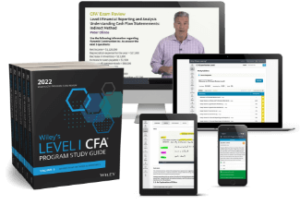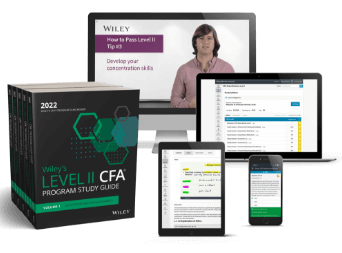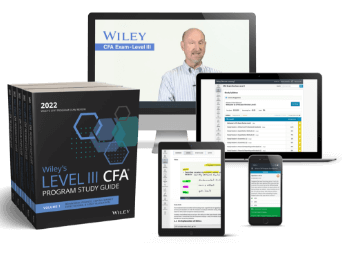CFA Alternative Investments

CFA Alternative Investments Quick Facts
- Alternative Investments is tied for the least heavily weighted topic on the Level I exam (tied with Portfolio Management and Derivatives).
- Alternative Investments makes up 5-8% of the Level I exam.
- 9-14 of the 180 questions on the Level I CFA exam will be dedicated to Alternative Investments.
- Alternative Investment questions make up 5-10% of the Level II and Level III exams.
- Alternative Investments include five main investment categories: hedge funds, private capital, natural resources, real estate, and infrastructure
Alternative Investments CFA: The Key Concepts Explained
Understanding Investment Categories
The five main Alternative Investment categories are:
- Hedge funds
- Private capital
- Natural resources
- Real estate
- Infrastructure
Hedge Funds Explained
Hedge funds are actively managed investment funds that are designed to return the highest possible absolute return. There are four main hedge fund strategies:
- Equity hedge (e.g., market neutral)
- Event-driven (e.g., merger arbitrage)
- Relative value (e.g., convertible bond arbitrage)
- Macro and CTA strategies (e.g., commodity trading advisers)
Private Capital Explained
Private capital includes funding for private equity and private debt.
Private equity can be categorized by three key investment strategies:
- Leveraged buyouts (e.g., MBOs and MBIs)
- The two types of leveraged buyouts are management buyouts and management buy-ins.
- Venture capital
- Venture capital investing can take place during the formative stage or after. Later stage financing can be used for expansion, and mezzanine financing occurs in preparation for IPO.
Trade sale, IPO, recapitalization, secondary sale, and write off/liquidation are the primary private equity exit strategies.
Private debt is different forms of debt offered to private entities by investors.
Private debt can be categorized into four key strategies:
- Direct lending
- Mezzanine debt
- Venture debt
- Other specialized strategies (CLOs, unitranche debt, real estate debt, and infrastructure debt)
Real Estate Explained
The two main sectors of real estate are:
- Residential (largest sector, 75% of global market)
- Commercial (office buildings, shopping centers, warehouses, etc.)
You can measure real estate return via:
- Appraisal index
- Repeat sales index
- REIT index
The two types of real estate investing are:
- Private
- Public
Natural Resources: Commodities and Timberland and Farmland Explained
Natural resources are investments in commodities or timberland and farmland.
CFA Institute notes commodity investments typically involve investments using commodity derivatives (futures or swaps). Returns are based on price changes and don’t include an income stream.
Timberland does however offer an income stream (from trees, wood, and other product sales) and includes both the factory and warehouse. Farmland is similar and generates income based on harvest quantities and agricultural commodity prices.
Infrastructure Explained
Infrastructure investments are real, capital intensive, long-lived assets.
Infrastructure can be organized into four main categories:
- Economic infrastructure assets
- Social infrastructure assets
- Brownfield investments
- Greenfield investments
CFA Alternative Investments: Understanding Investment Methods
The three investment methods are:
- Direct investment (no intermediary is used and an investor makes a direct investment)
- Co-investment (a mixture of direct and indirect investing and investment alongside a fund)
- Fund investment (where a fund makes an investment for the investor)
Wiley study materials go over these methods in detail with video lectures, practice questions, and practice exams.
Understanding Investment and Compensation Structures
Partnership Structures Explained
Partnership structures usually have two parties:
- General Partners (fund manager with unlimited liability)
- Limited Partners (accredited investor with investments risks)
Compensation Structures Explained
Compensation structures involve management fees, performance fees, and hurdle rates.
- Management fees (usually received by GP, based on committed capital not invested capital)
- Performance fees (additional incentive based on achieving return based on hurdle rates)
- Hurdle rates
- hard hurdle rate (rate calculated when annual return is in excess of the hurdle rate)
- soft hurdle rate (rate calculated when annual gross return is in excess of the hurdle rate)
Understanding Investment Clauses and Provisions
- Catch-up clause (makes GP’s incentive fee based on the total return, not just the return in excess of the preferred return)
- High-water mark (this is the highest value a fund has reached, net of fees)
- Waterfall (this decides the order in which distributions are made to LPs and GPs)
- Clawback (this allows VPs to recover performance fees from GPs)
Introducing Alternative Investments CFA Level I
CFA Level I Alternative Investments Questions
Hint: Wiley can help you strike a balance between qualitative and quantitative study prep for this topic, so you’re not caught off guard.
How to Approach Hedge Fund Investments
Prepare for this section by understanding the four main hedge fund investment strategies (equity hedge, event-driven, relative value, and macro and CTA strategies).
Hedge Funds Investments Practice Question
Which of the following hedge fund strategies is most likely to be categorized as a relative value strategy?
- Merger arbitrage
- Quantitative directional
- Fixed income convertible arbitrage
Correct answer: C
How to Approach Real Estate Investments
Prepare for this section by reviewing the two main sectors of real estate (residential and commercial), knowing how to measure real estate return with different indexes, and the types of real estate investing.
Real Estate Investments Practice Question
A mortgage real estate investment trust (REIT) offers the investor safety because:
- All investment properties in a REIT portfolio have an underlying collateral agreement in the form of a mortgage.
- The portfolio contains only mortgages and loans, which are relatively safe.
- The trust has obtained mortgage financing from large, reputable financial institutions for use in purchasing investment properties.
Correct answer: B
Introducing CFA Level II Alternative Investments
At this stage, you’ve been tested on your memorization of the concepts in the Level I exam, and you will now have to demonstrate a greater conceptual understanding of Alternative Investments. This will be a big change, so know exactly what to expect by studying for the Level II exam with Wiley CFA.
CFA Level II Alternative Investments Questions
How to Approach Commodities and Commodity Derivatives
Prepare for this section by understanding commodity investments and futures and swaps.
Commodities and Commodity Derivatives Practice Question
Which of the following is least likely to be a cash crop?
- Rice
- Sugar
- Coffee
A: Rice. Coffee and sugar are considered cash crops because they are grown and sold for income rather than consumed for subsistence, whereas rice is often consumed by its producers.
How to Approach Private Equity Investments
Private Equity Investments Practice Question
Which of the following companies would not likely interest a buyout investor?
- A new technology firm
- A railroad
- An established technology firm
A: A new technology firm. Buyout investors are generally not looking to bear the risk of a new product line and instead prefer companies with more established cash flow.
Introducing CFA Level III Alternative Investments
CFA Level III Alternative Investments Questions
CFA Level III Alternative Investments Practice Questions
An investor is considering an investment in a multi-strategy fund that pays each strategy manager a performance incentive without regard to total fund return and passes this fee on to clients. The multi-strategy fund involves lock-up periods, withdrawal gates, and so forth, at the fund level only. Which of the following is an advantage of the multi-strategy fund that is not available from a fund-of-funds?
- Fast reallocation of fund capital
- Lower netting risk on the performance-based incentive
- Economies of scale not available to individual investors in different funds for each category
A: Fast reallocation of fund capital. Multi-strategy funds will most likely be able to reallocate more quickly because its managers are under the same roof, and each strategy does not have its own capital controls.
CFA Alternative Investments Cross-Level Study Tips
Understand and Identify Different Alternative Investments
The most important thing you need to prioritize for this section is understanding and being able to identify the different Alternative Investment types (hedge funds, private capital, natural resources, real estate, and infrastructure).
Differentiate Between the Categories Within Asset Classes
As you study each of the Alternative Investment types, spend extra time differentiating between the different asset classes. For example, direct vs. indirect real estate investing and equity hedge vs. event-driven investing strategies.
Join a Study Program With Excellent Success Rates and Experienced Instructors
Alternative Investments makes up a relatively small but important portion of the CFA curriculum, so it’s helpful to study with the highest quality study materials on the market. Wiley lets you study with experienced instructors (that you can trust) that will guide you along your study journey. Plus, Wiley CFA study materials will save you time and stress by helping you target your efforts effectively on all three levels of the CFA exam.
CFA Alternative Investments – Frequently Asked Questions (FAQs)
Here are quick answers to a few additional questions candidates ask about Alternative Investments.
- According to CFA Institute, “Alternative Investments” is a label for a disparate group of investments that are distinguished from long-only, publicly traded investments in stocks, bonds, and cash (often referred to as traditional investments).
- CFA Institute notes that the five main categories of Alternative Investments are hedge funds, private capital, natural resources, real estate, and infrastructure.
- CFA Institute considers Alternative Investments to be supplemental strategies to traditional long-only positions in stocks, bonds, and cash.
Related Articles






